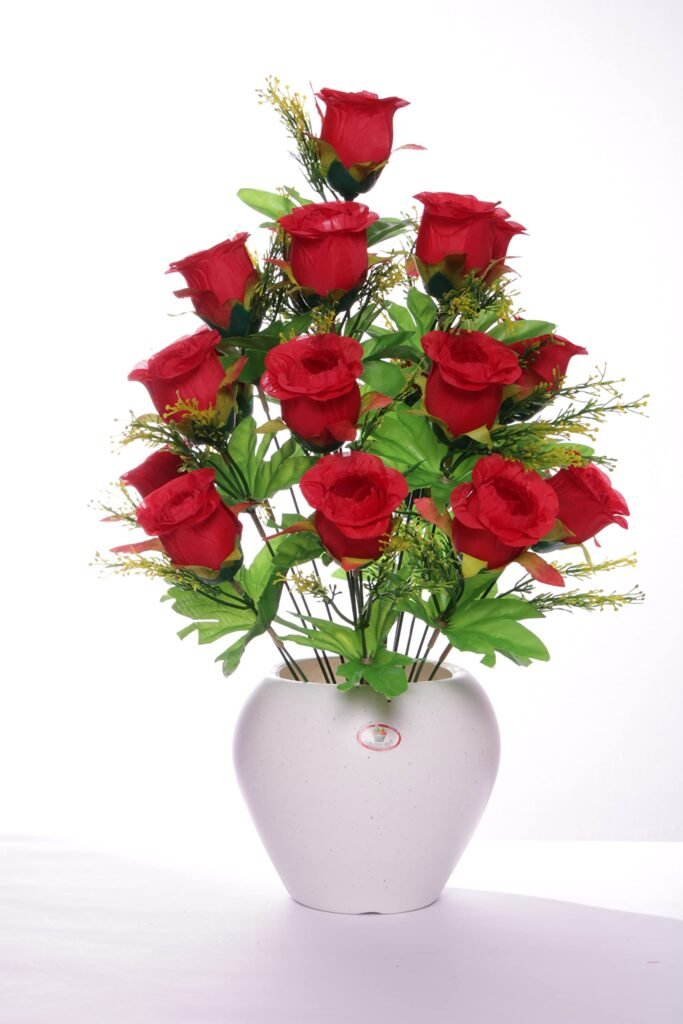From adding a splash of color to brightening up a dull corner, flower pots are a versatile and essential accessory for any plant enthusiast. Whether you’re a seasoned gardener or a novice plant parent, choosing the right flower pot can make all the difference in the health and appearance of your plants. In this comprehensive guide, we’ll delve into everything you need to know about flower pots, from their various types and materials to tips on selecting the perfect pot for your plants.
The Importance of Flower Pots
Flower pots serve several important purposes in gardening and plant care
- Containment: Flower pots provide a contained environments for plants to grow, making them ideal for indoor and outdoor gardening.
- Drainage: Proper drainage is crucial for plant health, and flower pots with drainage holes help prevent waterlogged soil and root rot.
- Decoration: Flower pots come in a wide range of styles, colors, and sizes, allowing you to express your personality and enhance your home decor.
- Mobility: Flower pots are portable, making it easy to move plants around to find the perfect spot with the right amount of sunlight and humidity.

Types of Flower Pots
Flower pots come in a variety of types to suit different preferences and needs
- Clay Pots: Clay pots, also known as terracotta pots, are a classic choice for gardening. They’re porous, allowing for good airflow to the roots, but they can also dry out quickly, so they may require more frequent waterings.
- Plastic Pots: Plastic pots are lightweight, durable, and affordable. They come in a wide range of sizes and colors and often have built-in drainage holes.
- Ceramic Pots: Ceramic pots are stylish and come in a variety of designs and finishes, from glossy to matte. They’re heavier than plastic pots but provide excellent insulation for plant roots.
- Metal Pots: Metal pots, such as those made of galvanized steel or copper, add a modern touch to any space. They’re durable and weather-resistant but may heat up in direct sunlight, so they’re best suited for indoor use or shaded outdoor areas.

Materials Used in Flower Pots
The material of a flower pot can impact its appearance, durability, and functionality. Here are some common materials used in flower pots
- Clay: Clay pots are made from natural clay and are porous, allowing air and water to pass through. They’re breathable, which helps prevent overwatering, but they can also dry out quickly in hot weathers.
- Plastic: Plastic pots are lightweight, inexpensive, and easy to clean. They’re available in a wide range of colors and styles and often have built-in drainage holes.
- Ceramic: Ceramic pots are made from clay that has been fired at high temperatures. They’re durable and come in a variety of finishes, from glazed to mattes.
- Metal: Metal pots, such as those made of aluminum, stainless steel, or copper, are sleek and modern. They’re durable and weather-resistant but may heat up in direct sunlights.

Choosing the Right Flower Pot
When choosing a flower pot for your plants, consider the following factors
- Plant Needs: Different plants have different requirements for soil, water, and sunlight. Choose a flower pot that accommodates your plant’s needs, such as size, drainage, and material.
- Size: The size of the flower pot should be proportional to the size of the plant. A pot that’s too small can restrict root growth, while a pot that’s too large can lead to overwatering and root rots.
- Drainage: Proper drainage is essential for plant health. Look for flower pots with drainage holes to prevent water from accumulating at the bottom and causing root rot.
- Aesthetics: Consider the style and design of the flower pot and how it will complement your home decor. Choose a pot that reflects your personal taste and enhances the beauty of your plants.
Caring for Flower Pots
Proper care and maintenance can prolong the life of your flower pots and keep your plants healthy
- Cleaning: Regularly clean flower pots to remove dirt, debris, and mineral deposits. Use mild soap and water, and scrub gently with a brush or sponge.
- Repotting: As plants grow, they may outgrow their pots and become root-bound. Repot plants into larger pots as needed to give their roots room to spread and grow.
- Overwintering: If you live in a cold climate, bring outdoor flower pots indoors during the winter to protect them from frost damage. Alternatively, wrap pots with insulation or move them to a sheltered locations.
- Storage: When not in use, store flower pots in a dry, sheltered location to prevent cracking and damage from freezing temperatures.

Creative Uses for Flower Pots
In addition to planting flowers and greenery, flower pots can be repurposed in creative ways
- Herb Garden: Create a kitchen herb garden by planting herbs like basil, mint, and parsley in small flower pots on your windowsill or countertops.
- Vertical Garden: Hang flower pots on a wall or fence to create a vertical garden that maximizes space and adds visual interest to outdoor areas.
- Centerpiece: Use a large, decorative flower pot as a centerpiece for your dining table or outdoor patio, filled with seasonal flowers or greenery.
- Storage: Use flower pots to store small items like pens, pencils, or kitchen utensils, keeping them organized and within easy reach.

Conclusion
Flower pots are more than just containers for plants; they’re an essential tool for gardening and a versatile accessory for home decor. Whether you prefer classic clay pots, modern ceramic pots, or sleek metal pots, there’s a flower pot out there to suit your style and needs. So go ahead, experiment with different types, materials, and designs, and elevate your plant game with the perfect flower pots for your greenery.
I like this post, enjoyed this one thanks for putting up.